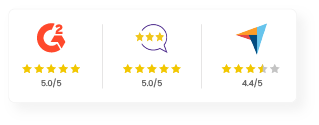Power Skills vs. Technical Skills: Building a Balanced Workforce in a Skills-Based Organization

In my interactions with L&D, HR and business leaders lately, one question has often come up: are we focusing enough on the right kinds of skills?
Skills-based organizations—those that focus on what people can do rather than just what their roles are—are quickly gaining momentum as the future of talent strategy. These businesses put skills, not titles, at the centre of their operating models and, in doing so, are more likely to drive innovation, retain high performers, and improve organizational agility.
However, despite growing interest, only one in five companies have adopted skills-based strategies in a meaningful, repeatable way, according to a global Deloitte survey. Why? Most have cited the reason as uncertainty.
Many leaders are unsure what skills their workforce actually possesses or which capabilities they should prioritize—especially when it comes to the debate between power skills (also known as soft or competency skills) and technical skills.
Let’s break down the distinction and explore how to build a balanced skill development strategy that fuels a more productive and future-ready workforce.
Defining Power Skills and Technical Skills
Understanding the difference between technical skills and power skills is foundational to any skills-based approach.
Technical skills are specific, teachable abilities that are often job-specific. These include hard skills like data analysis, software programming, or machinery operation which are competencies often gained through formal training or hands-on experience.
On the other hand, power skills (sometimes called competency skills) are the human capabilities that drive how work gets done. Think communication, leadership, emotional intelligence and collaboration. These skills and competencies are transferable across roles and industries, and often dictate how effectively someone can apply their technical expertise in real-world scenarios.
Some examples of power skills:
- Emotional intelligence
- Critical thinking
- Active listening
- Time management
- Problem-solving
Both types of skills are crucial. But they serve different purposes in the workplace and must be developed and measured accordingly.
Why Skills-Based Organizations Need Both
In a skills-based organization, hiring, training, and career development are centred around capabilities rather than static job descriptions. For this model to succeed, organizations must prioritize both technical skills and power skills.
As AI continues to reshape the way we work, AI skills to learn—like prompt engineering or data literacy—are in high demand. But at the same time, human-centric capabilities like adaptability, empathy, and collaboration are increasingly critical. Why? Because workforce skills must be versatile enough to complement and manage the technology that drives productivity.
Power skills empower employees to navigate complexity, work well in teams, and lead with empathy. These are essentially skills that machines cannot replicate. Meanwhile, technical skills ensure your workforce can execute tasks effectively, innovate faster, and solve problems with precision.
Organizations that focus exclusively on one type of skill risk creating an imbalance: technically proficient workers who can’t collaborate, or strong communicators who lack the expertise to contribute meaningfully to projects. A balanced workforce brings the best of both worlds.
How to Develop a Balanced Skill-Building Strategy
Creating a balanced skill-building strategy requires intentional design and a commitment to continuous digital upskilling.
Here are a few suggestions on how to get started:
Start with a skills audit
Use internal surveys, manager assessments, and performance data to identify which power skills and technical skills your workforce already has and which ones are missing. Platforms like Enthral help you conduct data-driven skill gap analyses using industry and location-based benchmarks.
Leverage upskilling platforms
Modern corporate training and skilling platforms should support both technical and power skill development. Look for platforms that combine digital learning modules with mentorship, peer learning, and real-world projects. Enthral supports this with a built-in skills framework, FRAC modeling for defining competencies, and AI-powered learning recommendations.
Make digital upskilling a continuous journey
With the half-life of technical skills shrinking to just 2.5 years, learning cannot be a one-and-done initiative. Provide ongoing learning paths for both types of skills so that your employees can upskill in their current roles or reskill into new ones.
Tailor training to roles and career paths
A data analyst may need more support with communication and storytelling, while a project manager might need deeper exposure to AI tools. Use role-based learning paths to balance technical and human-centric growth.
Encourage cross-functional collaboration
Soft skills often develop best in real-world settings. Create opportunities, through gigs, projects, or mentorship, for employees to practice communication, leadership, and problem-solving outside their usual silos.
Best Practices for Measuring Skill Development
Measuring the development of technical skills is often easier: certifications, project completions, and on-the-job application can provide tangible benchmarks. However, power skills are more nuanced and require a different approach.
Here’s how to get a clearer view:
Use AI-driven insights over basic tracking
Tracking through traditional learning platforms might show course completions, but it doesn’t reflect proficiency. Advanced skilling platforms like Enthral offer AI-driven insights that assess progress, behavior changes, and performance in real-time.
Compare competency vs skill growth
Understand the difference between acquiring a new skill (e.g., learning Python) versus demonstrating a competency (e.g., problem-solving in cross-functional teams). Develop assessments that evaluate both hard outcomes and behavioral changes.
Encourage self and peer assessments
Let employees and their peers reflect on their growth in areas like communication, leadership, and collaboration. These qualitative assessments can complement your quantitative data.
Monitor application, not just acquisition
Ask managers to evaluate how effectively employees are applying what they have learned. This goes beyond test scores and tracks real-world behaviour, like how well someone leads meetings or navigates team dynamics.
Wrapping Up
At a time when adaptability, innovation, and agility define success, a balanced approach to skills-based learning is key.
The upskilling meaning goes far beyond learning a new tool or process. it is now rather about transforming how employees think, lead, and collaborate. Power skills help individuals thrive in uncertain environments, while technical skills allow them to execute tasks and build tangible solutions.
The future of work isn’t about choosing between human and technical capabilities. It is about integrating both to build teams that are adaptable, innovative, and ready for what’s next. With platforms like Enthral, your organization can take a truly skills-first approach to talent development, helping learners upskill, reskill, and grow with purpose.











